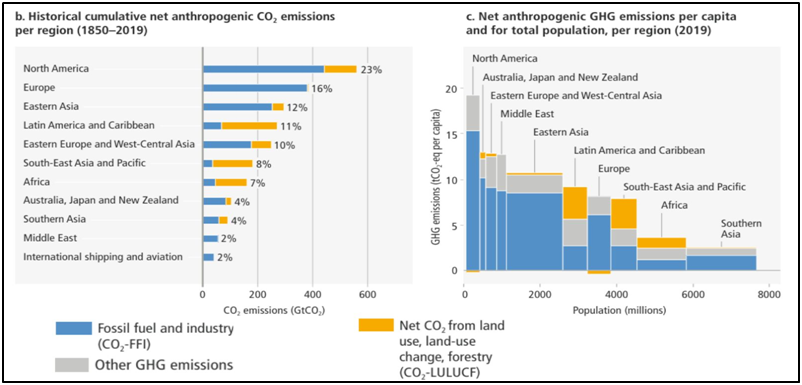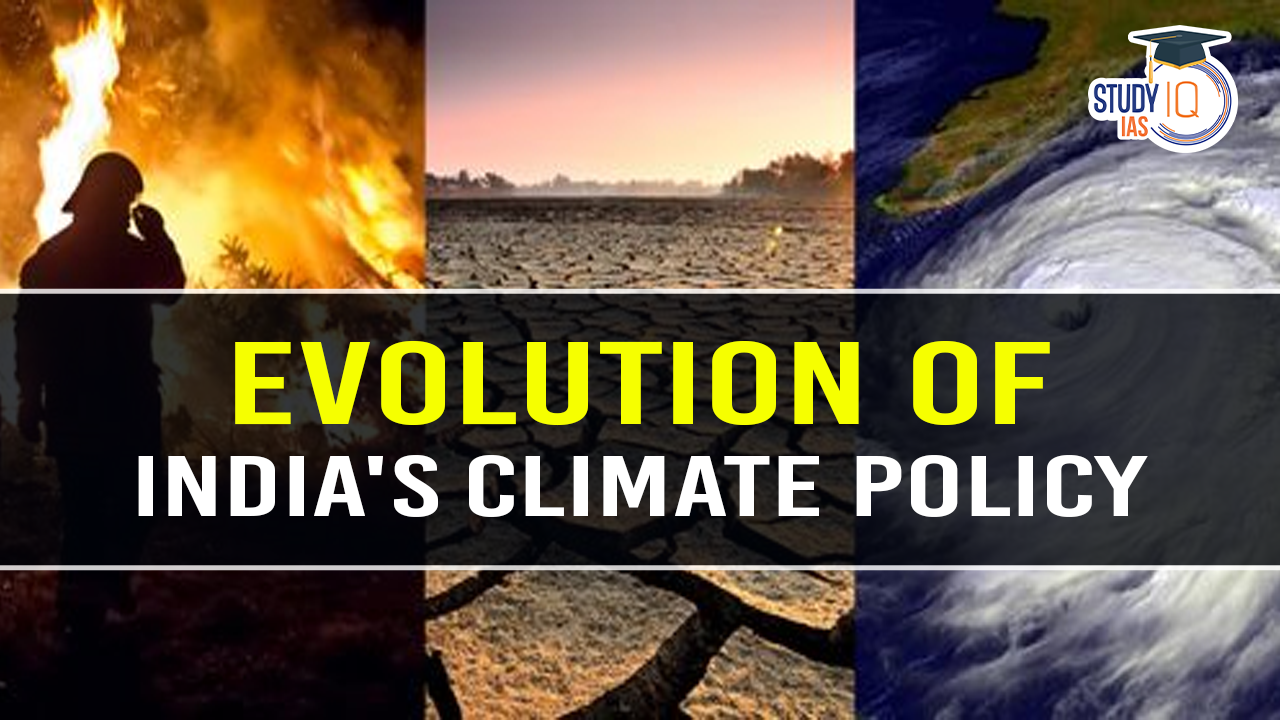Table of Contents
Context: India faced the dual challenges of sustaining rapid economic growth while addressing the global threat of climate change.
Evolution of India’s Climate Policy
- Over-exploitation by the Developed World:
- Climate change has reached a crisis stage due to the excessive, unsustainable production and consumption patterns of developed countries.
- Although only 16% of the world’s population lives in high-income nations (such as the US and EU), they account for 74% of the excess resource use (from 1970 to 2017) that exceeds the fair share.
- China has also exceeded its sustainability limit by 15% due to resource overuse.
- High-income countries must reduce resource use by approximately 70% from existing levels to achieve sustainability.

- Resource Use by the Developing World:
- Over the same period, 58 countries representing 3.6 billion people, including India, Indonesia, Pakistan, Nigeria, and Bangladesh, have remained within their sustainability limits.
- Evolution of India’s Climate Policy:
- Significant changes in the 1990s prompted the creation of new regulations in various fields, including the environment.
- The 1992 Rio Summit led to the emergence of the United Nations Framework Convention on Climate Change (UNFCCC), the Convention on Biological Diversity (CBD), and Forest Principles.
- Following Rio, the divisions of biodiversity and climate change in India’s former Ministry of Environment and Forests gradually emerged.
- Since then, India’s climate policy has been clear, consistent, and coordinated.
Key Determinants of India’s Climate Policy
- Disturbance in the Seasonal Cycle:
- India’s civilization and economy have developed in harmony with the seasonal cycle.
- In recent decades, climate change has disrupted this harmony by blurring the distinction between seasons, leading to increased unpredictability and negative consequences for nature and society.
- Limited Land Resources:
- India has a very low human-to-land ratio of 0.0021 sq km, which continues to decline.
- This requires an understanding and integrated management of land and water to survive with this serious limitation.
- Extreme Weather Events:
- According to the Germanwatch Global Climate Risk Index 2020, India is the fifth most affected country by extreme weather events, a sharp rise from its 14th position in 2017.
- By 2050, rising temperatures and shifting monsoon patterns could cost India 2.8% of its GDP and worsen living conditions for about half of the population (World Bank).
- India’s Resolution:
- The Ministry of Environment, Forest and Climate Change (MoEFCC) logo, “Nature Protects if She is Protected,” reflects India’s reverence and respect for nature and its focus on conservation.
- Despite having historical cumulative emissions of less than 4% (1850-2019) and 1.9 tonnes of CO2 per capita emissions, India has committed to taking resolute domestic and international actions that benefit the planet.
Essentials of India’s Climate Policy
Vision of India’s Climate Policy
- Inclusive Growth: Promoting comprehensive economic and social development.
- Poverty Eradication: Aiming to eliminate poverty.
- Declining Carbon Budget: Addressing the challenges of a decreasing carbon budget.
- Adherence to UNFCCC Principles: Firmly following the foundational principles of the UNFCCC.
- Climate-friendly Lifestyles: Encouraging sustainable and climate-friendly lifestyles.
Domestic Initiatives
- National Action Plan on Climate Change (NAPCC) 2008:
- Features eight missions that have laid the foundation for understanding and addressing climate change.
- 34 Indian states and Union Territories have developed State Action Plans on Climate Change (SAPCCs) aligned with NAPCC objectives.
- Adding Two More Cs to Climate Policy:
- Confidence and Convenient Action: Reflects the slogan ‘Sabka Saath, Sabka Vikas, Sabka Vishwas, Sabka Prayaas’.
- Examples:
- The Leadership Group for Industry Transition (a collaboration between India and Sweden).
- The ‘Lifestyle for Environment (LiFE)’ movement emphasises that convenient actions are essential.
- Net Zero Commitment:
- India supports the multilateral approach to achieve net zero emissions by 2070, as stated in its long-term low emissions development strategy submitted to the UNFCCC.
- Successfully decoupling economic growth from greenhouse gas (GHG) emissions.
- Reduced emission intensity of GDP by 33% from 2005 to 2019, despite having no binding mitigation obligations under the UNFCCC in the pre-2020 period.
- Renewable Energy:
- Solar energy capacity increased by over 26 times, and wind energy capacity more than doubled in the last decade.
- India now ranks 5th globally in both installed wind and solar energy capacity, achieving a target of 40% installed electric capacity from non-fossil fuels in November 2021, nine years ahead of schedule.
Global Initiatives
- CBDR-RC Principle: The Common but Differentiated Responsibilities and Respective Capabilities (CBDR-RC) principle was developed largely through Indian interventions at the Rio Summit in 1992.
- Building Global Institutions: Establishing organisations such as the International Solar Alliance (ISA), the Coalition for Disaster Resilient Infrastructure (CDRI), and the Global Biofuels Alliance (GBA).


 Operation Baam: Baloch Separatist Group ...
Operation Baam: Baloch Separatist Group ...
 National Register of Indian Citizens (NR...
National Register of Indian Citizens (NR...
 World Population Day 2025, Themes, Histo...
World Population Day 2025, Themes, Histo...





















